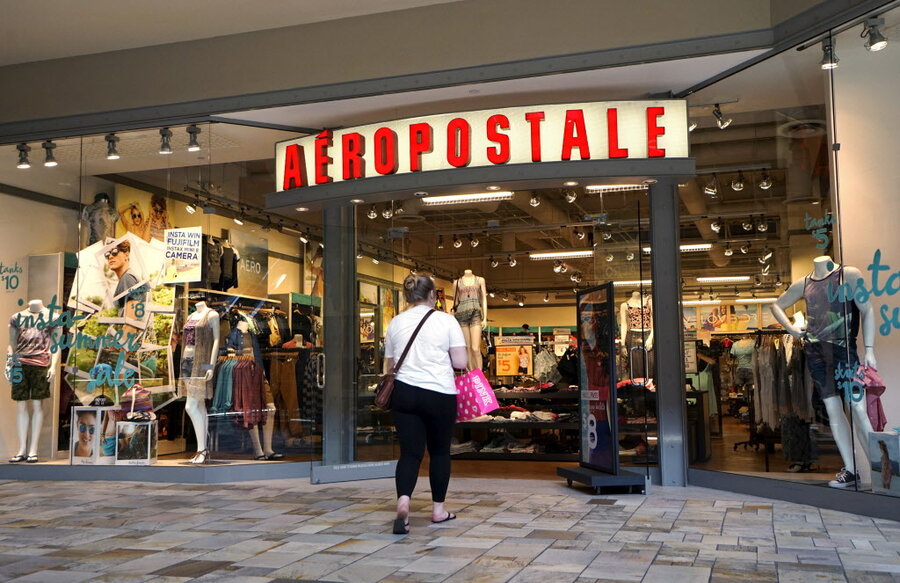Aeropostale bankruptcy: Another victim of 'fast fashion'?
Loading...
Aeropostale has had a rough go lately.
Early Wednesday morning the clothing retailer filed for chapter 11 bankruptcy protection in New York. Aeropostale will try to keep some of its stores open while it restructures its finances, even as it plans to close 113 of 739 stores in the US and all 41 of its Canadian locations.
“[W]e have chosen to take more decisive and aggressive action to create a leaner, more efficient business that is well-positioned to compete and succeed in today's retail environment," Aeropostale chief executive Julian Geiger said in a press release. "We appreciate the loyalty and support of our customers, employees and business partners as we complete this process."
In the court filing, Aeropostale Chief Financial Officer David Dick cited the changing and increasingly competitive teen retail environment as a reason for the company shift. Consumers are wanting a different kind of shopping experience, he said, one that today comes more from technology and less from spending time at a physical store in a mall.
Aeropostale was once a go-to store for middle school and high school students; it was worth nearly $3 billion in 2010, according to The Wall Street Journal. But it’s struggled to stay afloat as those same tweens and teens look for even cheaper ways to style their outfits. When compared to fast-fashion retailers such as Forever21 or H&M, which offer similar clothing at lower prices, Aeropostale holds less appeal.
"If I could get two of something for the same price of one at Aeropostale, why would I bother spending that money if I'm 16 years old?" Hakon Helgesen, a retail analyst at consultancy Conlumino, wrote in an evaluation of the brand reported by CNN Money in March.
The brand has lost money for the past 13 sales quarters. In March, sales at Aeropostale declined 6.7 percent when compared with the same period a year prior.
That’s not for lack of trying. In the fall of 2013, Bethany Mota, a popular YouTube star and fashion vlogger, partnered with Aeropostale to create her own fashion line. She designed several collections that emphasized a breezy, California vibe for the brand. In April of this year, Ms. Mota announced that she would be designing her last collection for Aeropostale.
Aeropostale isn’t the only fashion retailer facing a tough fight from "fast fashion." Similar chains like Pac Sun, American Apparel, and Wet Seal have all filed for bankruptcy in recent years. American Apparel filed for Chapter 11 bankruptcy in October amid a legal battle with its founder and former CEO, Dov Charney, and the declining popularity of more expensive, American-made casual wear.
Other clothing brands that were popular with teenagers and young adults in the late 1990s and early 2000s, however, are enjoying a resurgence. After years of declining profits, Abercrombie & Fitch posted higher-than-expected sales in March. Like Aeropostale and other, similar retailers in this space, Abercrombie sales struggled against the lure of H&M, Forever21, and Zara, which flex their dominance in teen apparel. But thanks to a revamped, more subdued brand image and unified management, Abercrombie may be back on track.
It’s not yet clear whether Aeropostale will also resurface from bankruptcy as a stronger brand. In its court filing, the company stated that it intends to emerge from bankruptcy within six months, albeit with a reduced operating structure. Aeropostale stocks were plummeting Wednesday, losing about 20 percent of their value by midday.






